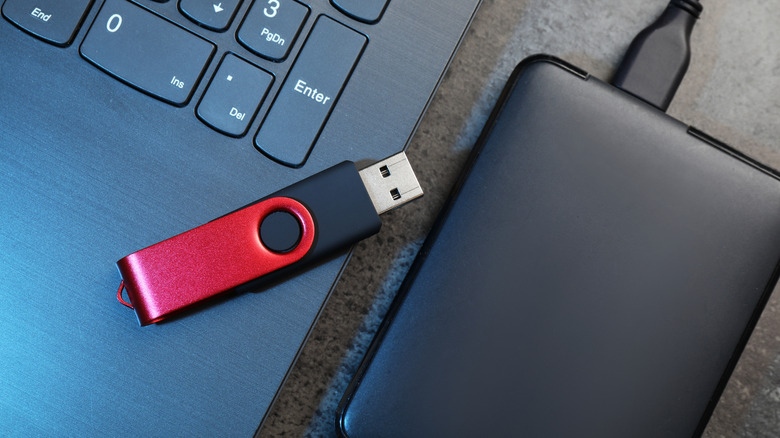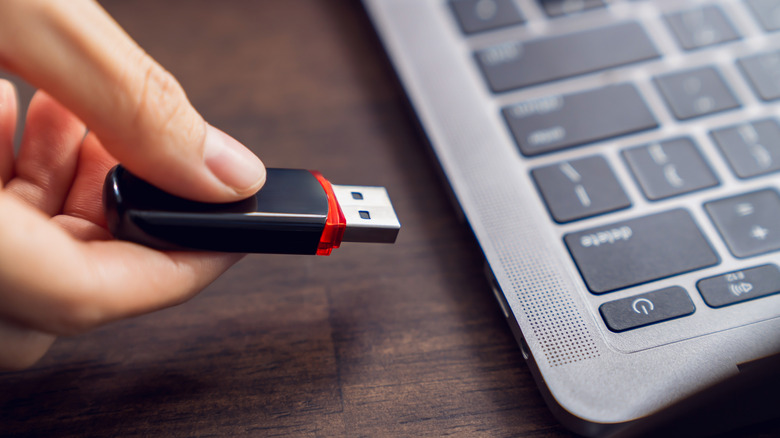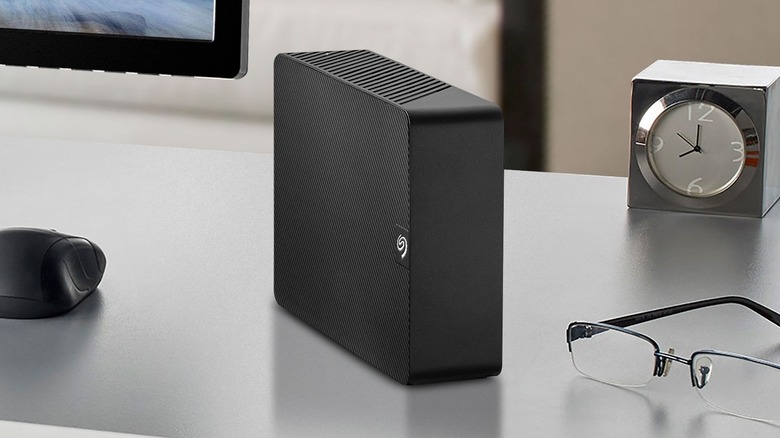USB Flash Drive Or External Hard Drive: Which Storage Solution Should You Use?
When you are in the market for external storage solutions, two of the most common options you'll find are USB flash drives and external hard drives. Despite the difference in their names, both use the USB interface to connect to your computer or phone and can store data. However, both storage drives have their advantages and disadvantages, which play a vital role in making one more suitable for you than the other.
USB flash drives, also referred to as thumb drives or pen drives, are a compact storage medium that uses flash memory modules and have a built-in USB connector to plug into different devices. The lack of any moving parts makes them reasonably durable against physical drops and shocks.
External hard drives, on the other hand, are much larger in size and typically don't have a built-in USB connector; instead, they rely on USB cables. Unlike flash drives, they are electromechanical in nature and have magnetic disks or platters for storing data. These mechanical and moving parts makes them less durable in case of an accident, though they often add more storage capacity at an affordable price.
What about data transfer speeds and reliability?
The data transfer speeds of both USB flash drives and external hard drives can depend on multiple factors, including the drive's USB version and the quality of the components used. Speed difference between USB flash drives and external hard drives is not as cut and dry as you might expect.
However, for simplicity's sake, if you have the same USB generation flash drive and external hard drive connected to the same generation USB ports, the flash drive will generally be faster, as hard drives also have to deal with the time it takes for the storage platters to spin up and the read/write head to reach the desired data sector.
The hard drives have the upper hand in terms of data reliability, because they are designed for frequent data read/writes and long-term data storage. USB flash drives, on the other hand, have finite write cycles, and each time you write fresh data, it wears down the memory cell. This problem is especially exacerbated in cheaper flash drives, as they lack advanced wear-leveling technology that helps avoid some memory cells from being used more frequently than others and failing over time.
Which is better for your use case?
USB flash drives and external hard drives are perfectly good storage solutions for most use cases. However, if you want something that you can carry around in your pocket for quick data transfers, USB flash drives are an easy choice. However, their long-term reliability is not on the same level as hard drives. More importantly, you won't find USB flash drives in sizes bigger than 2TB without paying a premium.
If you need more storage capacity, external hard drives are a better solution. You can get up to 28TB storage capacity drives from reputable brands. However, external hard drives get bigger in size with capacity, and higher-capacity drives are unable to run solely off USB power, needing an external power source (like a wall plug), which makes them a lot less portable. Another advantage external hard drives have over USB flash drives is their cost-effectiveness. The cost per GB will always be significantly cheaper for hard drives than for flash drives. External hard drives are more suitable if you are looking for cheaper, larger storage, and portability is not a concern.
We would be remiss to not point out a third storage solution: External solid-state drives (SSD). Like thumb drives, SSDs use flash memory chips, making them durable and fast, but they are significantly more reliable in the long term than USB flash drives, and come in storage capacities up to 8TB. However, they aren't affordable for the average user, and are usually reserved for high-end data storage uses.


